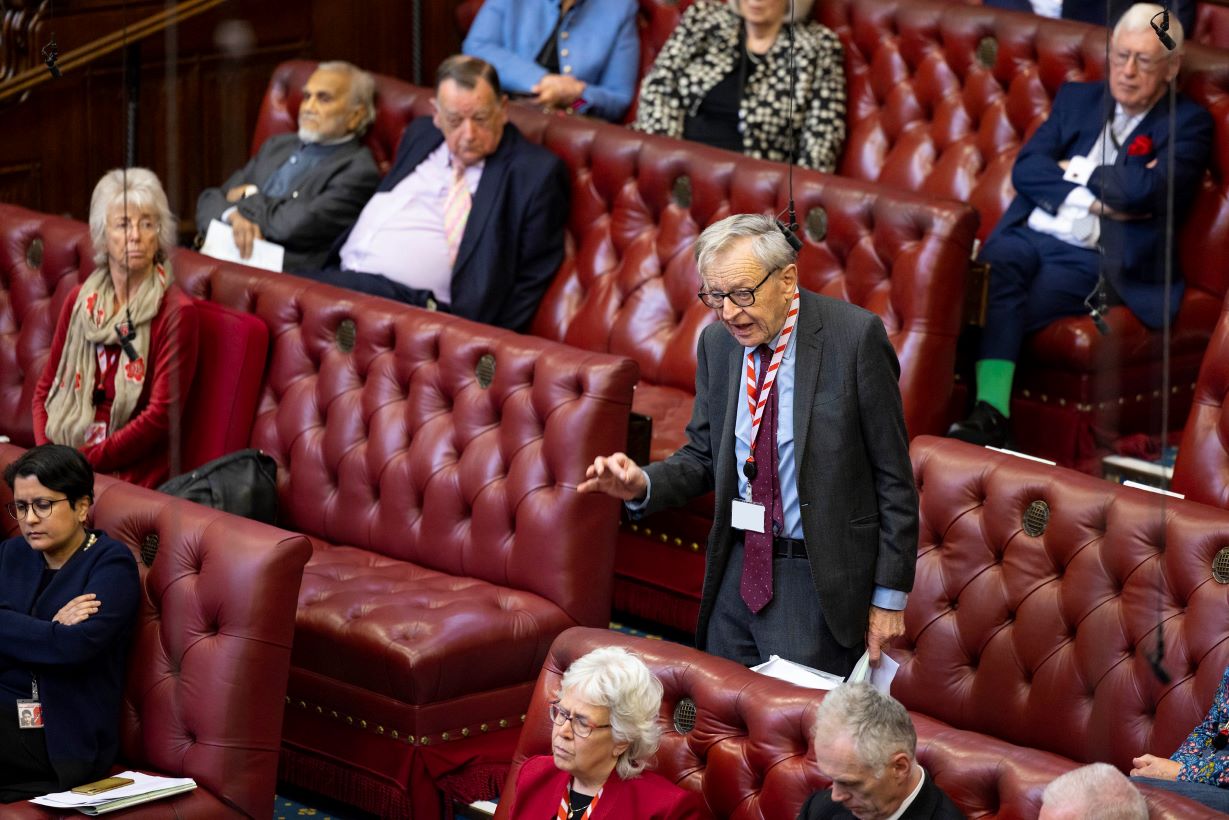 By machine reading 60,556,672 words of legislation in five countries — Canada, France, Germany, the UK and the US — Matthew Williams reveals the effects of changing legal language on policy power for judges. Here he explains how and why UK judges have become more actively involved in public policy disputes.
By machine reading 60,556,672 words of legislation in five countries — Canada, France, Germany, the UK and the US — Matthew Williams reveals the effects of changing legal language on policy power for judges. Here he explains how and why UK judges have become more actively involved in public policy disputes.
Dominic Raab and Lord Wolfson are sponsoring passage of the Judicial Review and Courts Bill, with its stated objective being to restrict judicial review. Applications for judicial review have already tumbled. The Lord Chief Justice curtailed reviews from Upper Tribunal decisions, pushing down applications from as many as 15,000 per annum in 2013 to 1,800 in 2021.
Regardless of this substantial cut in judicial review applications, the government wants to cut further. It is the case that applications have increased enormously since the 1960s, and rulings against the government – of both higher and lower profiles – are more common. But why do governments face more litigation, and why do they lose? These questions are tackled across five countries in my new book Judges and the Language of Law.
There are at least four, non-excludable hypotheses:
- The government is breaking the law more often;
- Judges are adapting rules of law to the advantage of weaker litigants;
- The litigant pool is wider and better resourced;
- Modern rules of law are more difficult to determine.
Evidence from machine reading 60,556,672 words of legislation since the Second World War suggests that the fourth hypothesis dominates, and in some instances promotes the other three. Hence, the ‘judicialisation of politics’ has been led by changes to law, rather than changes to actor preferences or behaviour. There is little evidence that governments wilfully break laws more often. But the text of modern law is increasingly capable of multiple interpretations when read alongside context, subtext, and intertextual analysis. There is also scant evidence that judges are bleeding-heart ‘activists’. There is evidence that laws are linguistically indeterminate to an extent that governments and citizens are unclear as to how laws in fact rule until they are litigated. As such, the new legislation will assuredly cut judicial review applications, but will do nothing to address the forces that encouraged rising applications in the first place.
Let’s take an example. In 2012, orders to deport seven Algerian terrorist suspects were held up by the UK Supreme Court. At issue was whether secret witness testimony as to their risks of torture could be presented in a closed hearing. The Justices ordered fresh hearings, to include the fateful testimony. The case revealed ambivalence between strictly managing borders whilst not conspiring in torture. There were questions begging as to the substance of law, as well as to the process of its implementation. Specifically, how does the Home Secretary’s deportation power cohere with powers for the Special Immigration Appeals Commission (also contained in primary legislation) to protect both national security and human rights? The Commission wanted a method for hearing the secret evidence without it being disclosed. The Home Secretary (Theresa May at the time) did not want to face a permanent injunction against disclosing that evidence. Such evidence could have predicted a terrorist attack overseas, and would have created a diplomatic incident if the British Government knew of a threat, but did not warn other implicated governments. The judicial intervention, controversial at the time, was an attempt to determine rules of law.
More generally, the language of UK legislation has changed. Laws are, to an increasing extent, linguistically under-determined. This indeterminate language of law represents social ambivalence and loose policy bargains. And, in turn, the indeterminacy of language enables post-promulgation discretion for policy implementation. This is a meso-level theory, where language connects macro-level social changes to individual court rulings at a micro-level. Law is no longer a stable genre of language, and has been “degenrified” by post war reconstructions, welfare expansions, and other drivers of increased state capacities clashing against sensitivity for individual rights. Even if evidence could be found that judges are merely pushing their personal policy preferences in their rulings, they are given cover to do so by conspicuous indeterminacies within and between rules of law.
Figure 1 describes linguistic changes in all UK criminal legislation enacted between 1950 and 2019 – 2,542,398 words in all. The absolute number, and the per section incidence of noun verb qualifying parts of speech (NVQPS – such as adjectives, adverbs, and conjunctions) have both increased.
The book offers comparative analysis of legislative language in five democracies – Canada, France, Germany, the UK, and the US. One finding emerges when comparing the cumulative probability that a section of legislation contains specified numbers of noun or verb qualifiers. In those systems with more institutional or partisan veto players (such as Germany and the US), language use more closely fits a normal distribution. Under a normal distribution, half of all sections will be equal to or less than the mean, and half will be equal to or greater than the mean.
In line with the expectations of Bryan Jones’s work on complexity, the patterns of language use are more leptokurtic in majoritarian democracies (especially France, and the UK), and more platykurtic in consensus democracies (Germany and the US). Leptokurtosis is seen with a slender peaked and skewed distribution, with more extreme variation – both clustering of observations near the mean and more outlying observations than would be expected in a normal distribution.
The UK’s pattern of language use is described in Figure 2, with grey bars describing what a normal distribution would look like, and black dots describing the observed frequencies.
A clustering of observations at the mean suggests generic language use. But, the high proportion of outliers also suggests that policy elites have few barriers to breaking with routine, and thereby developing legal language with creativity, with emotion, with fear, or with other potentially extreme motivators. By contrast, consensus democracies demonstrate a relative capacity in sustaining legal genre. They do not, to borrow Jones’s metaphor, experience as many seismic shifts.
To explain a decades-long expansion of judicial power we need to consider changes to the law itself. Ultimately the Westminster model concentrates power to communicate public policy, but it is not fully determinate in this discourse between state and society. The government can ouster court jurisdiction as a fix, but they may risk undermining natural justice, whilst not even addressing the root cause of court power.
____________________
 Matthew Williams is the Access and Career Development Fellow of Jesus College at the University of Oxford.
Matthew Williams is the Access and Career Development Fellow of Jesus College at the University of Oxford.
Photo by Iñaki del Olmo on Unsplash.









